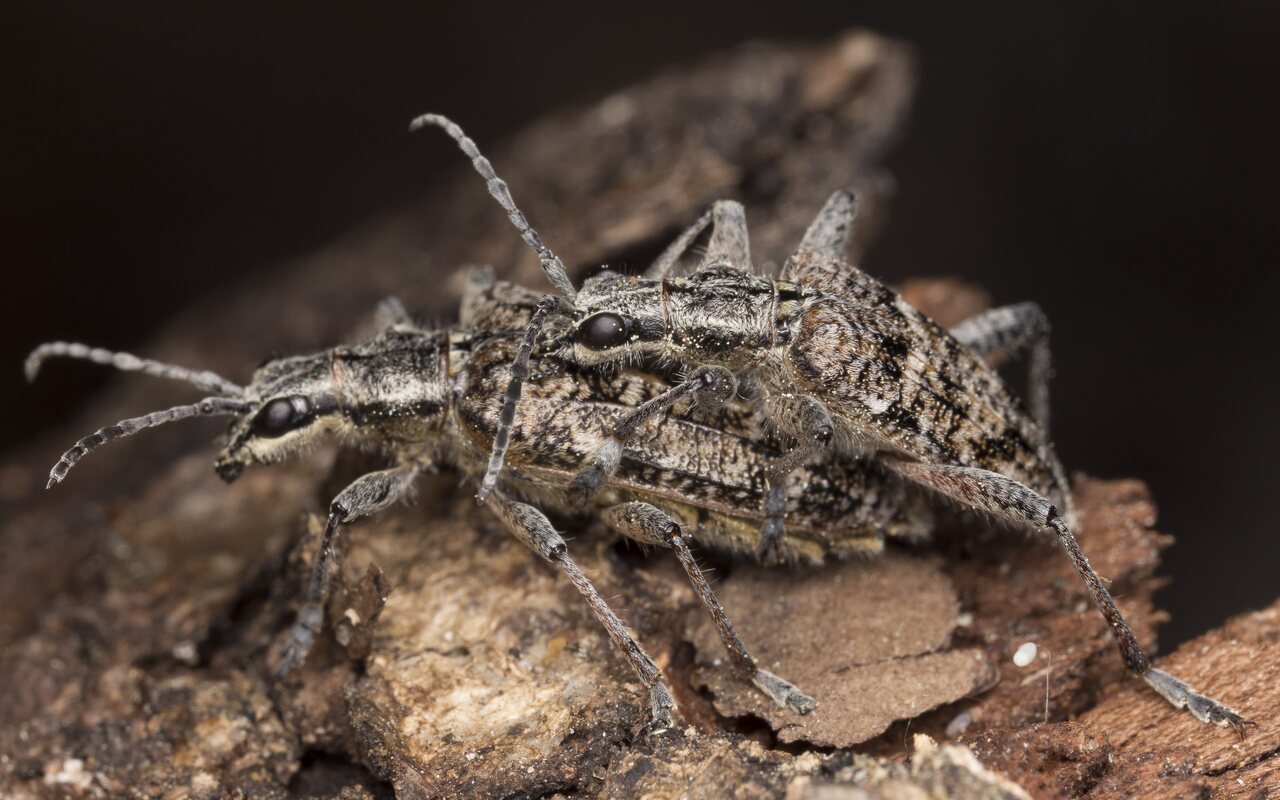
Rhagium inquisitor copula · briaunotasis ragijus poruojasi
- ribbed pine borer
- Schrotbock
- briaunotasis ragijus
- skujkoku ligzdu koksngrauzis
- rębacz pstry, rębacz sosnowiec
ukbeetles.co.uk/rhagium-inquisitor This is the Only Holarctic member of the genus. The typical habitat is coniferous woodland where it is associated with various trees e.g. larch and Fir and but more especially pine and spruce, it has also been recorded from oak and birch, but this may depend on host availability. Adults occur a little later than other members of the genus, from late May or June until August and unlike the others do not visit flowers; mating occurs early in the season and females choose old trees, fallen timber or stumps in which to oviposit, often those infected with fungi, damaged by fire or with the bark damaged and sticky with resin. Larvae emerge after two or three weeks and develop under bark, preferring damp or sticky areas, and do not enter the xylem, they generally develop over two years, rarely extending to three depending on the condition of the bark and the temperature, producing galleries 10-20mm wide and loosely filled with shredded bark, wood and frass.
They pupate in a distinctive subcortical cell, about 30mm long and composed of rings of wood fragments and fibres, during late summer or autumn or, very occasionally, in early spring. Adults emerge in the autumn and quickly become fully developed but they remain in the cell until the following spring when they will emerge from the wood en masse. This species attacks and may kill trees weakened by drought or fungi, it usually infests lower parts of the trunk and larvae may occur in large numbers in a single tree. Larvae are active and aggressive; they will bite when handled.
Kūnas 12-22 mm ilgio, pilkai-juodai margas, apaugęs tankiais geltonai pilkais plaukeliais. Antenos daugiau nei dvigubai trumpesnės už kūną. Vabalai skraido balandžio – rugpjūčio mėn. Aptinkami spygliuočių miškuose, ant rąstų, kelmų, negyvų medžių kamienų. Lervos vystosi po žieve, jų buveines galima atpažinti iš „lizdų“, kuriuos suformuoja ratu išdėstydamos medžio atplaišas. Lietuvoje dažnas.
‥- tags
- copula
0 comments
Add a comment